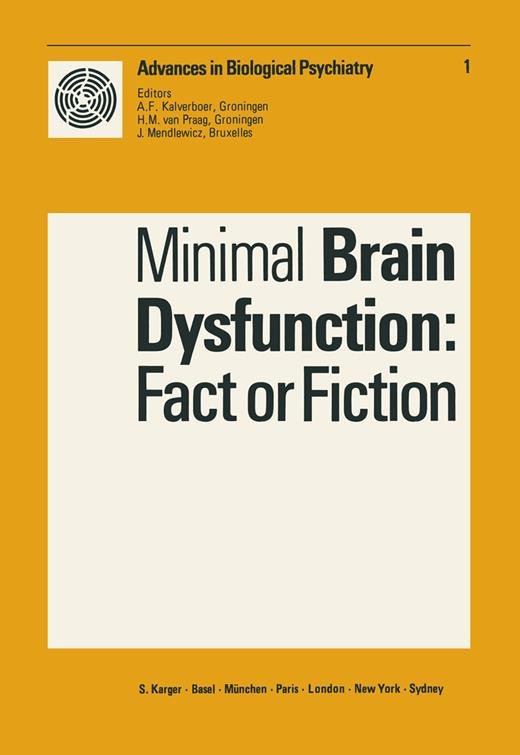The Evolution of ADHD:
A Journey Through Time
Attention-deficit/hyperactivity disorder (ADHD) is a neurodevelopmental condition characterised by persistent patterns of inattention, hyperactivity, and impulsivity. Its recognition and understanding have evolved significantly over centuries, reflecting shifts in medical knowledge, societal perceptions, and cultural narratives.
Early Observations and Descriptions
Hyperkinetic Reaction of Childhood (1968): The American Psychiatric Association's Diagnostic and Statistical Manual of Mental Disorders (DSM-II) introduced this term to describe children with excessive movement and attention difficulties.
Melchior Adam Weikard (1775): German physician Melchior Adam Weikard provided one of the earliest known descriptions of attention-related difficulties. In his comprehensive work "Der Philosophische Arzt" ("The Philosophical Doctor"), Weikard discussed "Mangel der Aufmerksamkeit" ("lack of attention"), detailing behaviours that align with modern understandings of inattention and distractibility.
Image: A portrait of Melchior Adam Weikard.
Sir Alexander Crichton (1798): In his seminal publication "An Inquiry into the Nature and Origin of Mental Derangement," Scottish physician Sir Alexander Crichton introduced the concept of "mental restlessness." He described individuals, particularly children, who struggled to sustain attention and were easily distracted, noting that these traits could be innate or arise from external factors.
Image: An illustration of Sir Alexander Crichton.
19th Century Cultural Depictions
Heinrich Hoffmann (1845): German psychiatrist Heinrich Hoffmann authored "Der Struwwelpeter," a collection of illustrated children's stories. Among them, "Die Geschichte vom Zappel-Philipp" ("The Story of Fidgety Philip") portrays a boy unable to sit still at dinner, leading to a chaotic outcome. This narrative mirrors behaviours associated with ADHD and reflects societal awareness of such traits during that era.
Image: An illustration from "Die Geschichte vom Zappel-Philipp" depicting Fidgety Philip at the dinner table.
Sir George Frederic Still (1902): Often regarded as a foundational figure in ADHD's medical history, British paediatrician Sir George Frederic Still presented a series of lectures to the Royal College of Physicians in London. He described children exhibiting "an abnormal defect of moral control," who, despite normal intelligence, displayed significant impulsivity and behavioural issues. Still proposed that these behaviours were not solely due to environmental factors but could have a biological basis.
Image: A photograph of Sir George Frederic Still
Attention Deficit Disorder (1980): The DSM-III replaced the previous term with "Attention Deficit Disorder (ADD)," recognising that attention deficits could occur with or without hyperactivity.
Advancements in Treatment Approaches
1937: Dr. Charles Bradley discovered that the stimulant Benzedrine improved behaviour and academic performance in children with behavioral disorders, marking the beginning of stimulant use in treating attention-related conditions.
Image: A historical image of Dr. Charles Bradley.
1955: The U.S. Food and Drug Administration approved methylphenidate (Ritalin), which became widely used for treating ADHD symptoms, and other things apparently.
Images: An early advertisements for Ritalin
Contemporary Perspectives and Ongoing Debates
Recent Trends: In recent years, there has been a notable increase in ADHD diagnoses, particularly among adults. This trend has sparked discussions about potential over diagnosis and the medicalisation of behaviours that might fall within the spectrum of normal human experience.
Image: A graph illustrating the increase in ADHD diagnoses over recent years.
Social Media Influence: The role of social media platforms, such as TikTok, has also been highlighted in raising awareness about ADHD. While these platforms have contributed to greater recognition of the disorder, they have also been sources of misinformation, underscoring the need for accurate public education.
Image: A screenshot from a TikTok video discussing ADHD awareness.
Terminological Evolution and Diagnostic Criteria
Minimal Brain Dysfunction (1930s–1950s): During this period, children exhibiting hyperactive and inattentive behaviours were often diagnosed with "minimal brain dysfunction," reflecting a belief in an underlying neurological cause.
Images: Medical texts from this era discussing "Minimal Brain Dysfunction."
Attention-Deficit/Hyperactivity Disorder (1987): The DSM-III-R refined the diagnosis to "Attention-Deficit/Hyperactivity Disorder (ADHD)," integrating both attention deficits and hyperactive behaviours into a single disorder.
Attention-Deficit/Hyperactivity Disorder (1994): The DSM-IV. No major changes.
Attention-Deficit/Hyperactivity Disorder (2013): The DSM-V brought major updates to diagnostic criteria e.g. the onset age changed from before 7 to before 12 years.























